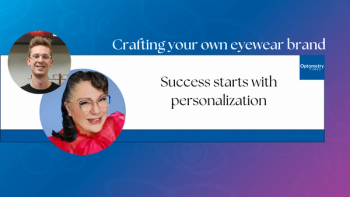
ARVO 2025: Lens thickness as a significant biomarker for accommodation in presbyopia
Susana Marcos, PhD, discusses the implications her research presents for the role optical coherence tomography (OCT) could play in presbyopia and myopia accommodation efforts.
Susana Marcos, PhD, discussed advanced research on optical coherence tomography (OCT) and its potential applications in understanding the crystalline lens, particularly in relation to presbyopia and myopia, during the Association for Research in Vision and Ophthalmology (ARVO) meeting in Salt Lake City held from May 3-7. Marcos explores how clinicians and researchers can leverage custom OCT technology to develop new diagnostic and treatment options. Currently, the OCT device used in the study is a custom-developed instrument, but there's significant potential for incorporating it into commercial clinical settings with some additional engineering. Key potential applications include:
- Monitoring crystalline lens changes during myopia development
- Improving intraocular lens positioning accuracy
- Assessing accommodative effort
- Supporting the development of accommodating lenses and vision correction devices
"When we started this research, OCTs are being used widely to image the back of the eye," said Percy Lazon de la Jara, director of Research Programs for CooperVision and the paper's coauthor. "To be able to image all the anterior segment, plus the crystalline lens, it's pushing the limits of technology, and it shows how technology is progressing that fast in our world right now. By pushing these limits, Dr Marcos lab is giving us really, really nice and insightful hints on how the crystalline lens work, but not only the crystalline lens, but also what happens when we start triggering signals of accommodation in presbyopes."
The research focuses on quantifying crystalline lens parameters through advanced OCT technology. While current analysis is limited to the portion of the lens visible through the pupil, the researchers have developed techniques to extrapolate and study lens characteristics beyond this initial view. Marcos highlights several promising research directions:
- Expanding parameter analysis to include equatorial diameter
- Studying lens surface area
- Creating more comprehensive insights into presbyopia and lens changes
A critical takeaway is that lens thickness emerges as a significant biomarker for accommodation. The OCT technology provides quantitative insights into crystalline lens transformations, which could revolutionize understanding of age-related vision changes. Future technological possibilities include miniaturized OCT devices, advanced accommodating lens technologies, and more precise measurement of accommodative efforts.
Marcos underscored the research's potential to bridge current limitations in understanding presbyopia and myopia. By developing more sophisticated measurement and analysis techniques, researchers aim to provide clinicians with powerful tools for diagnosing and potentially treating vision-related conditions. The research represents an exciting intersection of advanced imaging technology, ophthalmological research, and potential clinical applications, promising more nuanced understanding of lens behavior and vision changes.
Newsletter
Want more insights like this? Subscribe to Optometry Times and get clinical pearls and practice tips delivered straight to your inbox.
















































.png)


